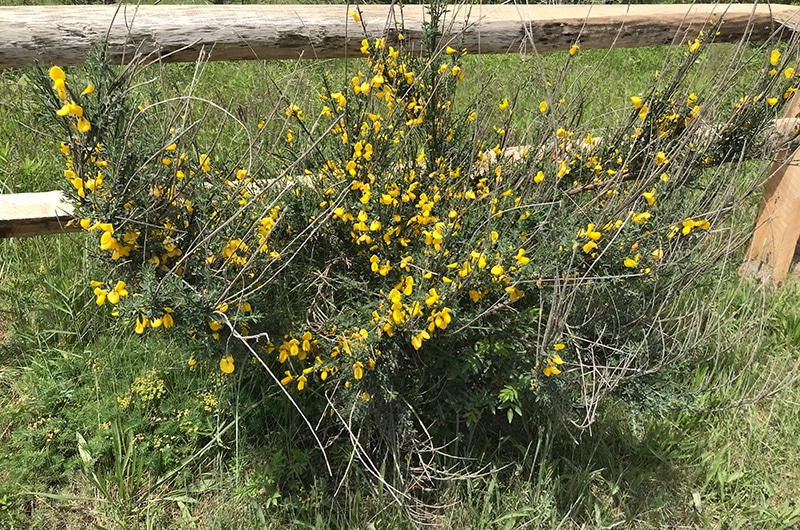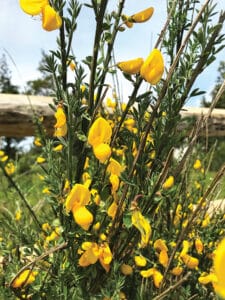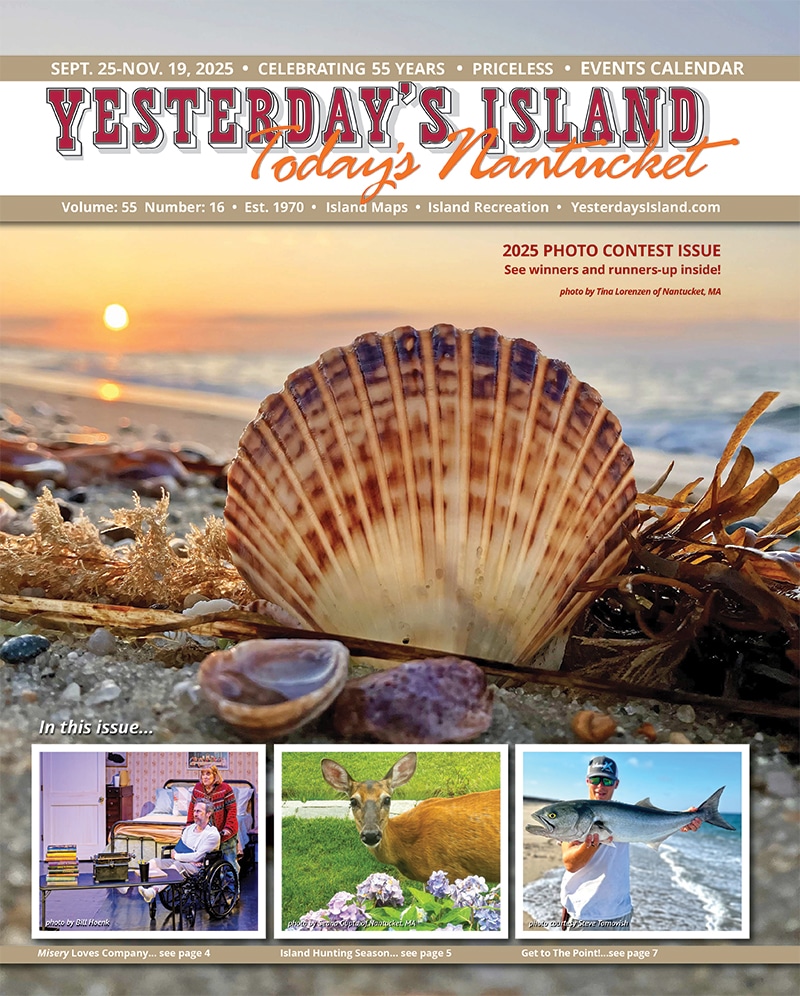Dr. Sarah Treanor Bois
Director of Research & Education at the Linda Loring Nature Foundation
Driving down Surfside or Madaket Road this time of year, you may be struck by the bright pop of yellow blossoms on a dark green stem. Ooo and ahh as you might, don’t be taken in by this lovely non-native plant. Seemingly benign, this yellow shrub is an invasive species waiting to pounce.
Scotch Broom (Cytisus scoparius) is a perennial leguminous shrub native to western and central Europe. While a deciduous shrub, it appears evergreen due to the stems which remain dark green in winter allowing it to photosynthesize while other plants are dormant.

Scotch Broom was introduced from Europe as a garden ornamental by early settlers of the Pacific Coast. Later it was used to prevent erosion and stabilize banks and sand dunes. The woody shrub establishes quickly in disturbed areas. It was widely planted on Cape Cod and the Islands in the 1800s because of this capacity to stabilize sand dunes. Like many plants brought in for erosion control (Japanese knotweed, for example), Scotch Broom is now one of the worst invasives on the west coast of the United States, where it thrives in the Pacific northwest and has been recognized as a pest weed in the interior valleys along the west coast of the U.S. since the 1920s.
It has become an invasive species throughout the Pacific Northwest, where it competes with native plants and forms dense stands that are difficult to manage and remove. In Oregon alone, Scotch broom costs Oregonians an estimated $40 million per year in control efforts.
Several characteristics contribute to Scotch Broom’s success as an invasive plant:
- Although it loses its leaves in winter, the photosynthetic tissue in its stems allows it to grow throughout the year. I
- Its roots host nitrogenfixing bacteria, which helps the plant to establish in nutrient-poor soils.
- It produces abundant seeds that remain viable in the soil for many years. In addition, Scotch broom is slightly toxic and unpalatable to grazers and browsers, so our deer won’t eat it.

While Scotch Broom has been on Nantucket for about two centuries, it had previously never been seen as a problem because it would die back in the winters. With warming winters of the past several decades, the Scotch Broom has not only survived and thrived, but it has been able to reproduce and spread. Take a drive down Barrett Farm Road (off of Madaket Road) and you will see plenty of examples of expanding Scotch Broom populations. Once planted and under cultivation, many individuals now line the road and are expanding into the open space around.
In 2005, the Massachusetts Invasive Plant Advisory Group (MIPAG) evaluated Scotch Broom for its invasive potential. At the time, it did not make the list because “Current evidence does not show that it is spreading rapidly from cultivation and out competing native species in Massachusetts.”
Now, some 13 years later, members of the conservation community on-island, namely the Invasive Plant Species Committee (IPSC) of the Nantucket Biodiversity Initiative, have been working to document the occurrences of this noxious plant where it occurs outside of cultivation. The data may show that Scotch Broom is indeed spreading and that this species has the potential to be invasive here as well.
Looking to the problems on the west coast, members of the IPSC hope that we can stop this problem species before it gets to the level of costing the state upwards of $40 million.
What can you do to help?
- Please don’t plant Scotch Boom. Consider many other yellow-blooming species such as forsythia.
- If you already have Scotch Boom on you property, dig it up.
- Cut it back to the ground each yea before it sets seed.
- Keep an eye out for seedlings each spring and pull them up, roots and all, while they are small.
- Let us know! Find a Scotch Boom out in the wild? Email IPSC co-Chair, Dr. Sarah Bois, to document it (stbois@llnf.org). Every bit of data helps!


